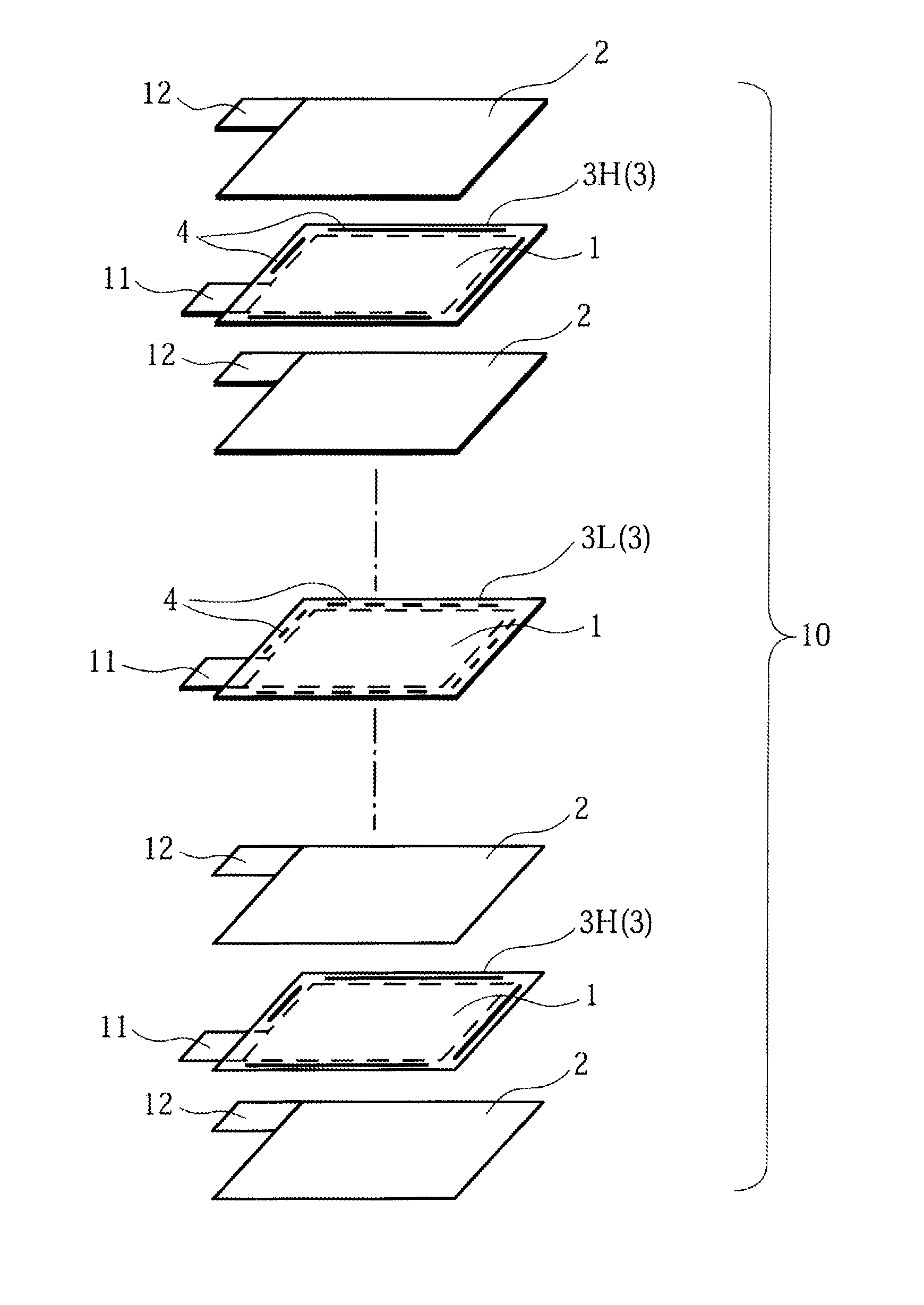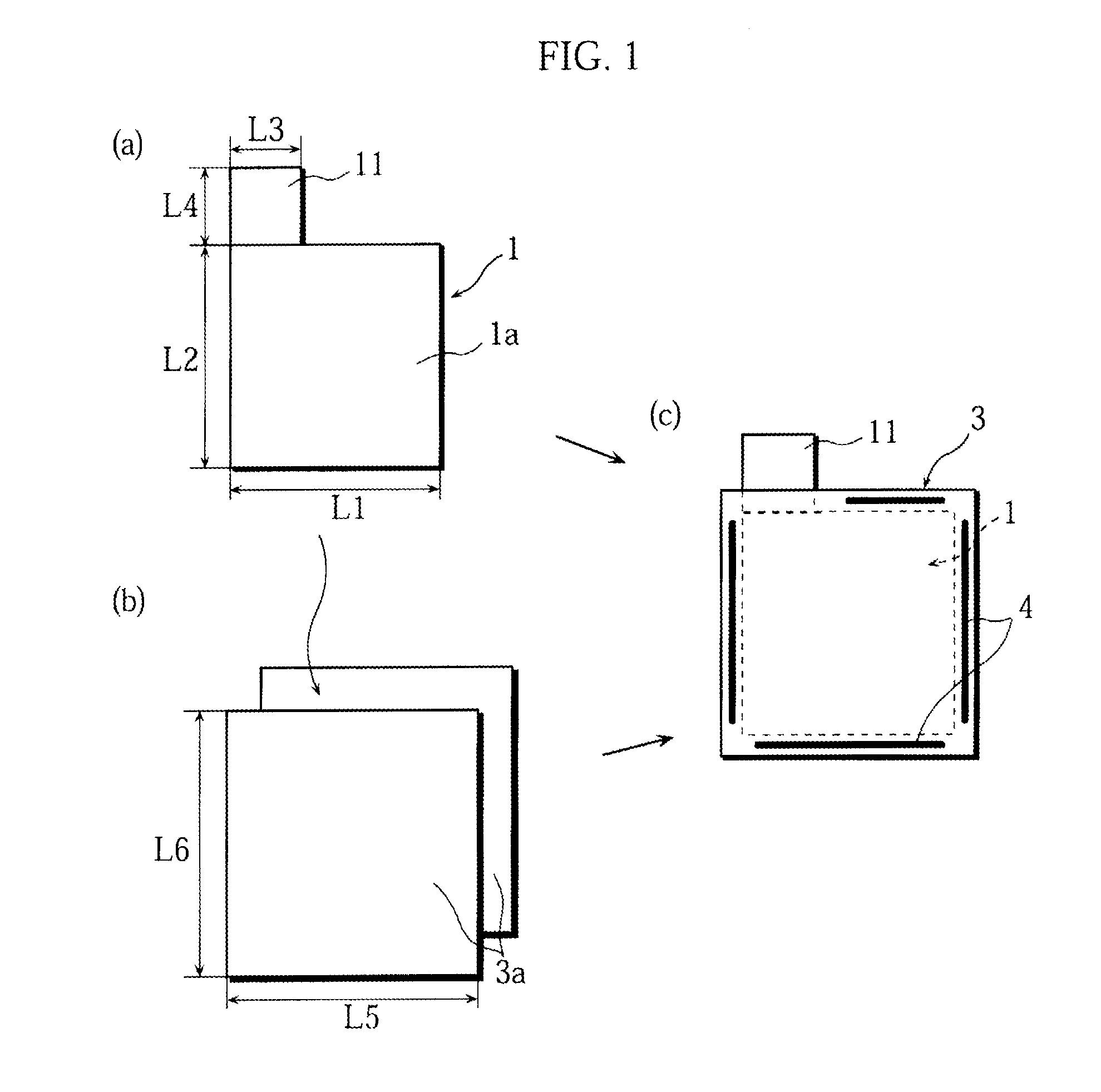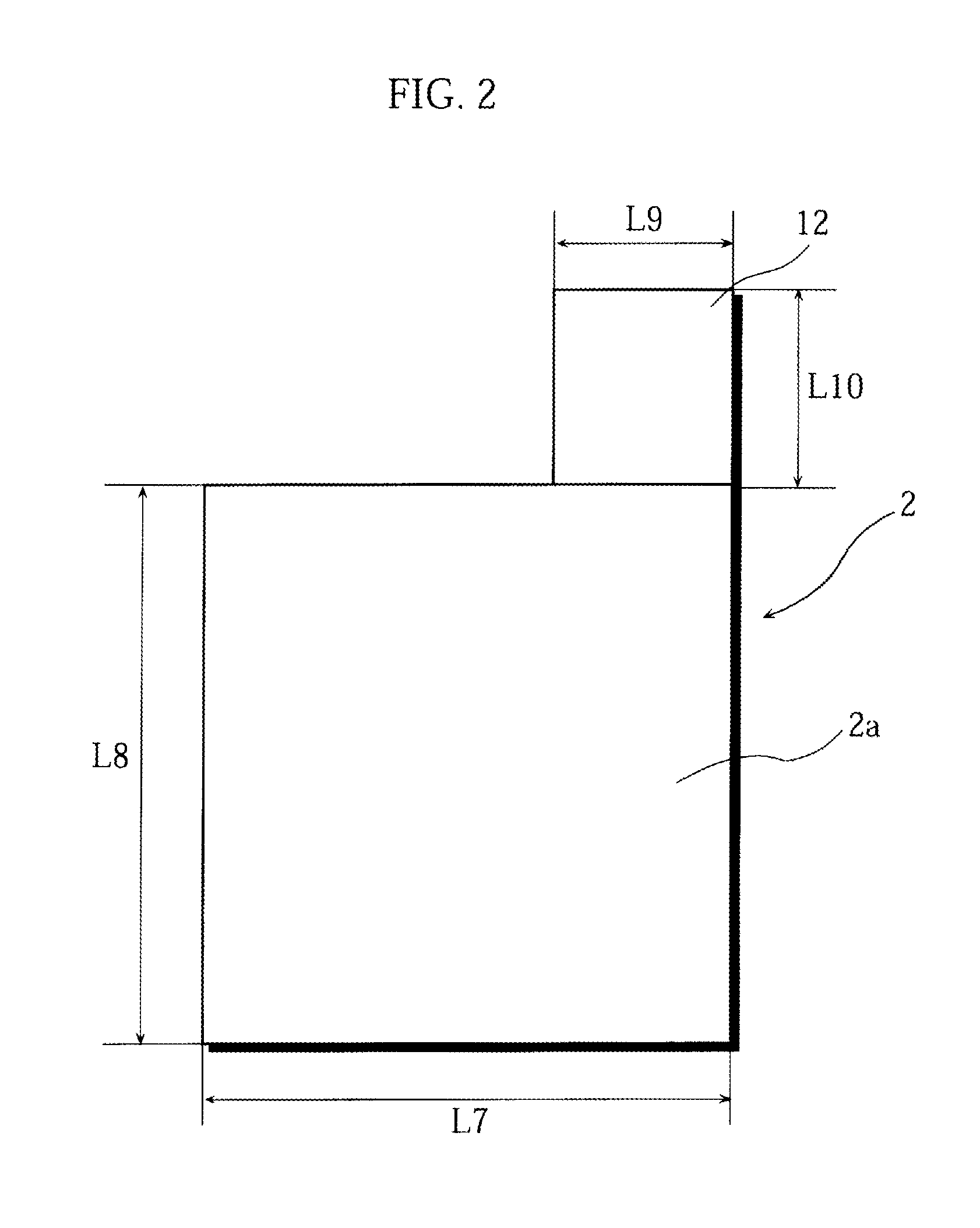Stack type battery
a battery and stack technology, applied in the field of stack type batteries, can solve the problems of difficult infiltration of electrolyte solution into the internal electrode plate, difficult infiltration of electrolyte solution into the inside through the pores of the porous membrane, etc., and achieve the effect of more stable batteries
Inactive Publication Date: 2012-03-29
SANYO ELECTRIC CO LTD
View PDF0 Cites 27 Cited by
- Summary
- Abstract
- Description
- Claims
- Application Information
AI Technical Summary
Benefits of technology
The present invention provides a stack type battery that can effectively uniformize the distribution of the electrolyte solution in a stacking direction of the stacked electrode assembly. This is achieved by bonding adjacent separators in a stacking direction-wise central region of the stacked electrode assembly to a smaller extent than the bonded portion of each separator located in both stacking direction-wise end portions of the assembly. This results in a more uniform distribution of the electrolyte solution across the battery.
Problems solved by technology
However, a problem with this structure, in which the positive electrode plate or the negative electrode plate is enclosed in the pouch-type separator, is that the electrolyte solution is difficult to permeate into the internal electrode plate.
Although the polyethylene sheet or the polypropylene sheet, for example, which is commonly used as the separator, is a porous membrane, the electrolyte solution is difficult to infiltrate into the inside through the pores of the porous membrane unlike the case of, for example, a separator made of nonwoven fabric.
Another problem with the above-described stack type battery also has been that the electrolyte solution is difficult to permeate into the electrode plate enclosed in a pouch-type separator located at the stacking direction-wise center of the stacked electrode assembly.
This problem is especially serious when the number of the stacks is large or when the electrode plate area is large.
This problem leads to unevenness in the distribution of the electrolyte solution among the electrode plates in the stacked electrode assembly, resulting in unevenness in the amount of the surface film formed on the negative electrode during pre-charge and non-uniform reactions during charge and discharge.
As a consequence, the cycle life degradation occurs.
Method used
the structure of the environmentally friendly knitted fabric provided by the present invention; figure 2 Flow chart of the yarn wrapping machine for environmentally friendly knitted fabrics and storage devices; image 3 Is the parameter map of the yarn covering machine
View moreImage
Smart Image Click on the blue labels to locate them in the text.
Smart ImageViewing Examples
Examples
Experimental program
Comparison scheme
Effect test
example 1
[0070]A stack type battery fabricated in the same manner as described in the foregoing embodiment was used as the stack type battery of this example.
[0071]The battery fabricated in this manner is hereinafter referred to as Battery A1 of the invention.
the structure of the environmentally friendly knitted fabric provided by the present invention; figure 2 Flow chart of the yarn wrapping machine for environmentally friendly knitted fabrics and storage devices; image 3 Is the parameter map of the yarn covering machine
Login to View More PUM
| Property | Measurement | Unit |
|---|---|---|
| area | aaaaa | aaaaa |
| viscosity | aaaaa | aaaaa |
| thickness | aaaaa | aaaaa |
Login to View More
Abstract
A stack type battery has a stacked electrode assembly (10) in which a plurality of positive electrode plates (1) and a plurality of negative electrode plates (2) are alternately stacked one another across separators. Each one of pairs of the separators adjacent to each other in a stacking direction has a bonded portion (4) in which the separators are bonded to each other in at least a portion of a perimeter portion thereof, so as to form a pouch-type separator (3). The proportion of the bonded portion (4) of one of the pouch-type separators 3 (low blocking rate pouch-type separator (3L)) located in a stacking direction-wise central region of the stacked electrode assembly (10) is made smaller than the proportion of the bonded portion (4) of each of the pouch-type separators 3 (high blocking rate pouch-type separator 3H) located in both stacking direction-wise end portions of the stacked electrode assembly (10).
Description
BACKGROUND OF THE INVENTION[0001]1. Field of the Invention[0002]The present invention relates to stack type batteries, and more particularly to high capacity stack type batteries used as power sources for, for example, robots, electric vehicles, and backup power sources. Still more particularly, the invention relates to a secondary battery having a stacked electrode assembly using a pouch-type separator.[0003]2. Description of Related Art[0004]In recent years, batteries have been used for not only the power source of mobile information terminal devices such as mobile-phones, notebook computers, and PDAs but also for such applications as robots, electric vehicles, and backup power sources. This has led to a demand for higher capacity batteries. Because of their high energy density and high capacity, lithium-ion batteries are widely used as the power sources for such applications as described above.[0005]The battery configurations of the lithium-ion batteries are broadly grouped into ...
Claims
the structure of the environmentally friendly knitted fabric provided by the present invention; figure 2 Flow chart of the yarn wrapping machine for environmentally friendly knitted fabrics and storage devices; image 3 Is the parameter map of the yarn covering machine
Login to View More Application Information
Patent Timeline
 Login to View More
Login to View More Patent Type & Authority Applications(United States)
IPC IPC(8): H01M10/02H01M6/46H01M50/105H01M50/466
CPCH01M2/18H01M10/0413H01M10/058Y02T10/7011H01M10/0525H01M2300/0017Y02E60/122H01M2/0237Y02E60/10Y02P70/50H01M50/105H01M50/466Y02T10/70
Inventor TANI, YUJIMAEDA, HITOSHIFUJIWARA, MASAYUKIKUSUKAWA, MASAOSHINYASHIKI, YOSHITAKAFUNAHASHI, ATSUHIRO
Owner SANYO ELECTRIC CO LTD
Features
- R&D
- Intellectual Property
- Life Sciences
- Materials
- Tech Scout
Why Patsnap Eureka
- Unparalleled Data Quality
- Higher Quality Content
- 60% Fewer Hallucinations
Social media
Patsnap Eureka Blog
Learn More Browse by: Latest US Patents, China's latest patents, Technical Efficacy Thesaurus, Application Domain, Technology Topic, Popular Technical Reports.
© 2025 PatSnap. All rights reserved.Legal|Privacy policy|Modern Slavery Act Transparency Statement|Sitemap|About US| Contact US: help@patsnap.com



